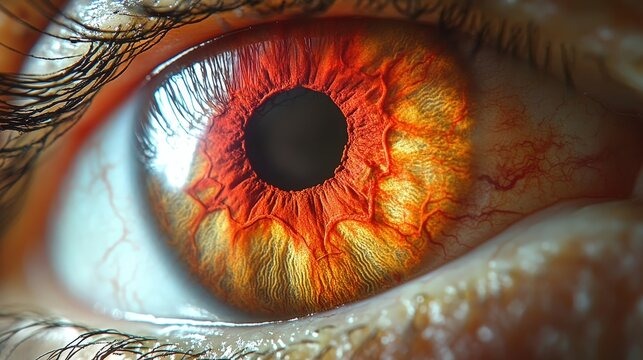
Your eyes are vital to your daily life, yet many people overlook how fragile they truly are. From simple discomfort to complete blindness, there are a number of serious eye diseases that can leave you unable to see. These conditions often develop without noticeable symptoms at first, making them even more dangerous. Here are 5 deadly eye diseases that could steal your sight forever if left untreated.
1. Glaucoma: The Silent Killer of Sight

Glaucoma is often referred to as the “silent thief of sight” because it sneaks up on you without warning. This deadly eye disease occurs when increased pressure within the eye damages the optic nerve, leading to irreversible vision loss. Unfortunately, glaucoma often shows no symptoms in the early stages, meaning by the time you notice vision changes, the damage may already be severe.
Why It’s Dangerous:
Glaucoma is one of the leading causes of blindness worldwide, with over 60 million people affected. If left untreated, glaucoma can cause complete blindness, and many people don’t even realize they have it until it’s too late.
Prevention and Treatment:
Regular eye check-ups are crucial for detecting glaucoma early. While there’s no cure, treatment options include prescription eye drops, oral medications, and in some cases, surgery to lower eye pressure. Early diagnosis is key to slowing or preventing irreversible damage.
2. Macular Degeneration: The Thief of Central Vision

Age-related macular degeneration (AMD) is a leading cause of vision loss in people over 50. This deadly condition affects the macula, the part of your retina responsible for central vision. As the macula deteriorates, individuals lose their ability to see fine details, making everyday tasks like reading and driving nearly impossible.
Why It’s Dangerous:
Macular degeneration doesn’t typically cause pain, but the gradual loss of vision can severely impact quality of life. There is no cure for AMD, and once central vision is lost, it cannot be restored.
Prevention and Treatment:
While there’s no way to completely prevent AMD, maintaining a healthy diet, quitting smoking, and protecting your eyes from UV rays can help slow its progression. For wet AMD, medications and injections may prevent further vision loss.
3. Cataracts: A Cloudy Future for Your Eyes

Cataracts, one of the most common causes of blindness worldwide, occur when the lens of the eye becomes clouded, causing blurred vision. Most people develop cataracts as they age, but factors like injury, genetics, or certain medications can also cause them.
Why It’s Dangerous:
Cataracts slowly steal your sight, clouding your vision and making everything appear blurry. If left untreated, cataracts can lead to complete vision loss. The good news is that cataracts are treatable with surgery, but delaying treatment can lead to more severe consequences.
Prevention and Treatment:
Wearing sunglasses to protect your eyes from UV rays and avoiding smoking can help prevent cataracts. If you develop cataracts, surgery is the most effective solution. During surgery, the cloudy lens is removed and replaced with an artificial one, restoring clear vision.
4. Diabetic Retinopathy: A Hidden Danger for Diabetics

Diabetic retinopathy is a severe eye disease caused by damage to the blood vessels in the retina due to uncontrolled blood sugar levels. This condition is the leading cause of blindness in adults, particularly those with long-term diabetes.
Why It’s Dangerous:
Diabetic retinopathy can develop without any symptoms, which is why it’s often called a “silent” disease. As the condition worsens, it can lead to permanent blindness. Left untreated, it can cause retinal detachment, hemorrhaging, and vision loss.
Prevention and Treatment:
The best prevention is keeping blood sugar levels under control. Regular eye exams are crucial for early detection, as timely treatment with laser surgery or injections can prevent further damage. Managing your diabetes can significantly reduce the risk of diabetic retinopathy.
5. Retinal Detachment: A Sudden and Life-Altering Emergency
Retinal detachment occurs when the retina, the light-sensitive tissue at the back of the eye, pulls away from its normal position. This condition is a medical emergency that can lead to permanent blindness if not treated immediately.
Why It’s Dangerous:
Retinal detachment is a life-threatening condition because it cuts off the blood supply to the retina, which leads to the death of retinal cells and permanent vision loss. This is often caused by a tear or hole in the retina, usually following an eye injury or advanced age.
Prevention and Treatment:
Although retinal detachment cannot always be prevented, it is crucial to protect your eyes from trauma. If you notice symptoms like sudden flashes of light, a curtain-like shadow over your vision, or a significant increase in floaters, seek emergency care. Retinal detachment requires immediate surgery to reattach the retina and prevent permanent vision loss.
Conclusion
The five deadly eye diseases mentioned above are not to be taken lightly. While some of these conditions develop gradually and without noticeable symptoms, they can lead to permanent blindness if not diagnosed and treated early. The key to preventing blindness is regular eye exams, especially as you age or if you have risk factors like diabetes or a family history of eye diseases. Take care of your eyes today, and they will take care of you for a lifetime.
Remember, prevention is always better than cure. Protect your eyes from harmful UV rays, maintain a healthy diet, quit smoking, and control chronic conditions like diabetes. If you experience any changes in your vision, don’t wait — schedule an eye exam immediately to protect your most precious sense.


